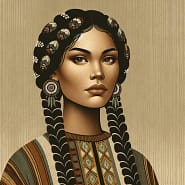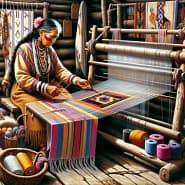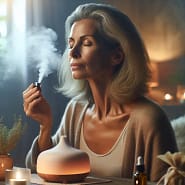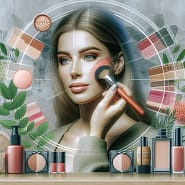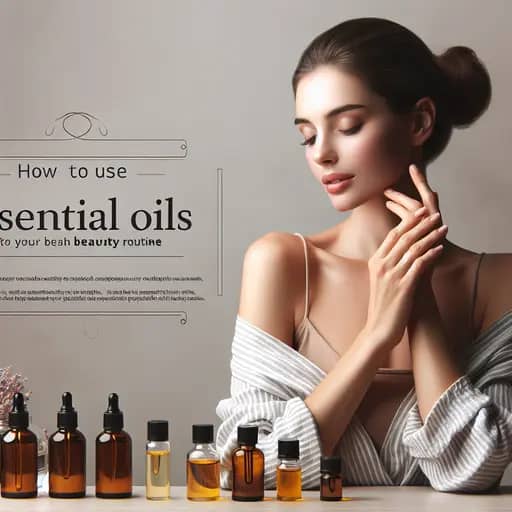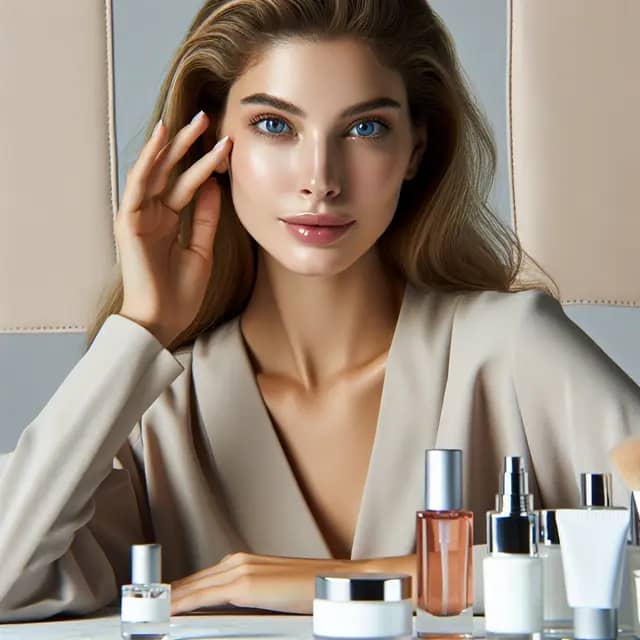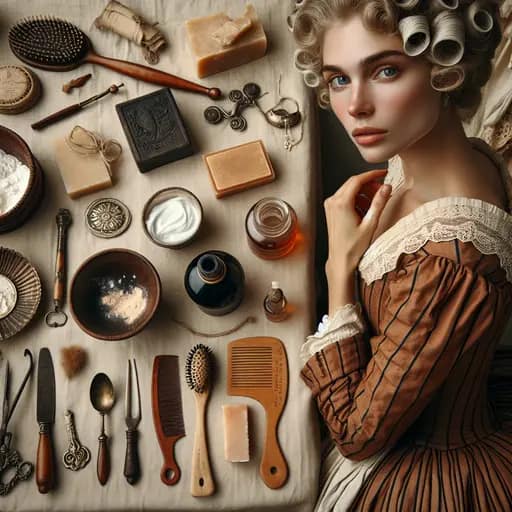Introduction: Benefits of Incorporating Essential Oils into Your Beauty Routine
The beauty industry has witnessed a dramatic shift over the last few years with more and more people turning to natural and organic products. Among these, essential oils have gained significant attention due to their numerous beneficial attributes for the skin and overall beauty. If you’ve ever wondered about How to Use Essential Oils in Your Beauty Routine, then this article is tailor-made for you.
Incorporating essential oils into your beauty routine can indeed change the way you treat your skin, hair, and body. Here’s why you should consider adding these potent natural extracts to your beauty routine:
- Rich in Nutrients: Essential oils are packed with vitamins, antioxidants, and essential fatty acids that nourish your skin and hair deeply
- Boost Skin Health: Essential oils promote healthy skin by combating acne, reducing signs of aging, and improving complexion
- Natural Fragrance: The enticing aromas of essential oils not only leave you smelling great but also uplift your mood
- Benefits to Hair: Essential oils can help in tackling various hair problems like dandruff, hair fall, and promoting hair growth
This comprehensive guide will walk you through the types of essential oils, their properties, safety guidelines for using them on your skin, and the most effective ways to incorporate these magical elixirs into your beauty routine. Additionally, we’ll explore some easy DIY recipes for beauty products using essential oils, suitably blended for different skin types and concerns. Finally, we’ll delve into how essential oils can enhance your hair care routine and their use in aromatherapy during the beauty regimen.
Whether you’re a natural beauty enthusiast or someone simply intrigued by the world of essential oils, read on to discover the transformative impact of essential oils on your beauty routine.
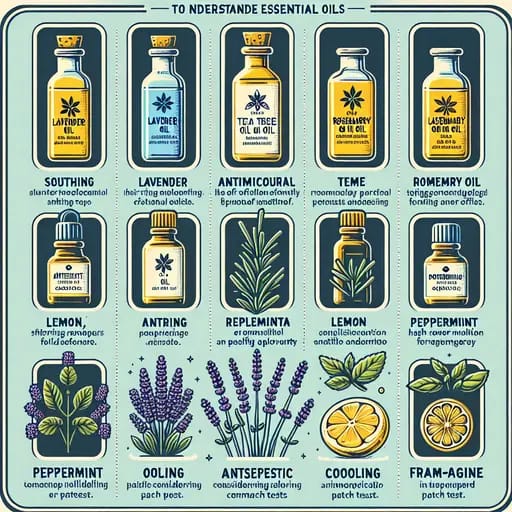
Understanding the different types of essential oils and their properties
Before implementing essential oils into your beauty regimen, it’s imperative to understand their natures and unique properties. Different essential oils offer various benefits for your skin, hair and overall well-being. Here, we explore several types of essential oils and their corresponding characteristics.
Lavender oil: This is a real powerhouse in the world of essential oils, offering a multitude of benefits. Known for its soothing properties, lavender oil aids in calming the skin and minimizing inflammation. It’s perfect for promoting sleep and reducing stress, which in turn leads to healthier skin.
Tea Tree oil: Famous for its antimicrobial and anti-inflammatory properties, tea tree oil is a go-to for acne-prone skin. It helps in reducing redness, swelling, and inflammation, further preventing the spread of acne.
- Rosemary oil: This oil is renowned for promoting hair growth and thickness. Incorporating this into your routine can stimulate your scalp and offer an excellent remedy for hair loss issues.
- Lemon oil: Packed with antiseptic properties, lemon oil helps in treating skin ailments and works effectively in improving skin complexion while reducing oiliness.
- Peppermint oil: An invigorating oil known for its cooling properties and stimulating effects – great for refreshing the skin and promoting blood flow.
- Frankincense oil: With its ability to reduce wrinkles and skin discoloration, this oil is a great addition for anti-aging skin care.
Each essential oil has its own unique properties and application methods, including topical application, inhalation and aromatherapy. In the next section, we will cover the important guidelines on how to safely use these majestic elixirs on your skin.
Remember, it’s necessary to do a patch test before fully integrating these oils into your routine to avoid any adverse reaction. The world of essential oils is a marvel to discover – unveiling their properties and integrating them into your beauty regimen can drastically enhance the quality of your skin and hair.
Stay tuned as we venture into the safe use of these potent potions in the next section. As we enrich our knowledge on essential oils, we are taking a step closer to a more natural and holistic approach to beauty.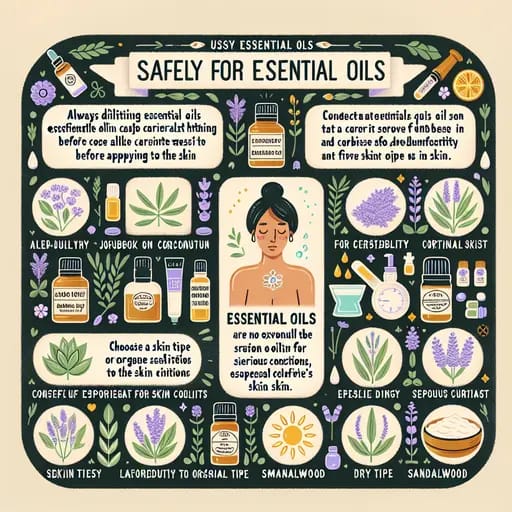
Safety Tips for Using Essential Oils on Your Skin
As much as the use of essential oils in your beauty routine can deliver diverse benefits for your skin, it is crucial to understand how to use them safely. Essential oils are potent, and their improper use may lead to skin irritation or sensitivity. The following are some safety tips to consider before you get started on your new natural skincare journey.
1. Always Dilute Essential Oils
Directly applying essential oils to your skin can cause negative reactions like burns, irritation, or allergies. Therefore, always dilute essential oils with a carrier oil, such as jojoba or coconut oil, to avoid damaging your skin.
2. Conduct a Patch Test
Before using an essential oil, perform a small patch test to check your skin’s sensitivity to the oil. To do this, apply a small amount of the oil on your wrist or the back of your elbow and wait for 24 hours to observe any reaction.
3. Choose Quality Oils
While opting for essential oils, remember that quality matters. Always choose high-quality, pure, and organic essential oils to minimize the chances of skin irritation. Do your research and select reputable brands that provide transparent information about the ingredients and sourcing of their oils.
4. Understand Their Limitations
Do not use essential oils as a cure-all solution. They can surely enhance your beauty routine but cannot ameliorate severe skin conditions or replace medical prescriptions. If you have a specific skin condition, always consult with a dermatologist before introducing essential oils into your routine.
5. Be Careful with Exposure to Sunlight
Some essential oils, especially citrus-based ones, can cause phototoxic reactions if exposed to UV light. It is recommended to avoid direct sunlight for at least 12 hours after applying such oils to your skin.
6. Consider Your Skin Type
- For sensitive skin: Opt for mild essential oils like Lavender and Chamomile which are gentle to the skin.
- For oily skin: Essential oils such as Lavender, Lemongrass, and Peppermint can balance oil production.
- For dry skin: Oils like Avocado, Sandalwood, and Rosehip have great moisturizing properties.
To achieve the best possible results with essential oils, it is crucial to follow these safety tips. By doing so, you can enjoy the full benefits of using essential oils on your skin without any hazards.
Next, we’ll dive into how to properly dilute essential oils for safe application on your skin. Stay tuned!
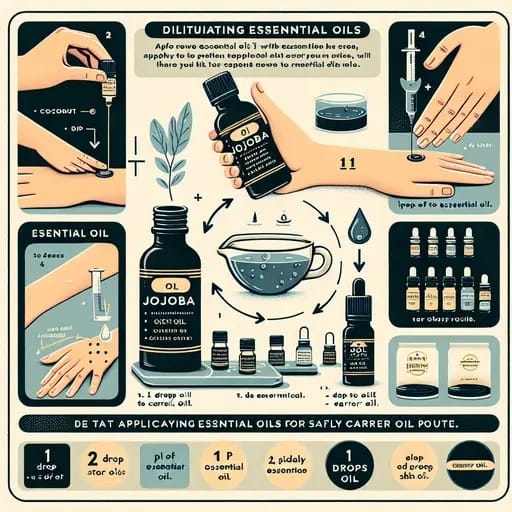
How to Dilute Essential Oils for Safe Application
If the thought of applying pure, undiluted essential oils on your skin makes you wince, don’t worry! You’re not alone. Essential oils are potent substances, and using them undiluted can lead to skin irritation, or worse, allergic reactions. For this reason, diluting essential oils is a crucial step in your beauty regimen.
In this section, we will guide you on how to properly dilute these precious elixirs for safe application. But before we dive in, let’s clarify one important fact: essential oils should never be applied directly on your skin without first diluting them in a carrier oil. Carrier oils, such as jojoba, coconut, or almond oil, help spread the essential oils evenly on your skin, reducing any potential for irritation.
Step-By-Step Guide to Dilute Essential Oils
Now that you’re up to speed with the importance of dilution, let’s get down to the process.
- Select your choice of essential oil and a carrier oil. Make sure you’re not allergic to any of these oils.
- If you’re a beginner, start with a 1% concentration. That means 1 drop of essential oil to 100 drops of carrier oil.
- For local applications like a face serum, a 2% to 3% concentration is often more therapeutic. That means 2 to 3 drops of essential oil per 100 drops of carrier oil.
- Mix the oils in a dark glass bottle, then shake well to combine. Remember, light can degrade essential oils.
- Perform a patch test on your skin before using the diluted oil. Apply a small amount on your forearm and check for any reaction within 24 hours.
- If there is no reaction, you can start using the oil in your beauty routine.
- Moisturizing
- 1 cup Sea Salt or Sugar
- 1/2 cup Coconut Oil, Olive Oil, or Almond Oil
- 10-20 drops Lavender Essential Oil
- 1 cup Filtered Water
- 1/4 cup Liquid Castile Soap
- 5 drops Tea Tree Essential Oil
- 2 cups of Water
- 2 tablespoons Dried Rosemary
- 10 drops Rosemary Essential Oil
- Lemon essential oil: Known for its astringent properties and its ability to balance oil production.
- Ylang-ylang essential oil: This oil helps control oil production and minimize breakouts.
- Sandalwood essential oil: Often used for its moisturizing properties, providing lasting hydration for dry skin.
- Rose essential oil: Known for its hydrating and soothing properties, making it perfect for dry and sensitive skin.
- Chamomile essential oil: It’s highly regarded for its soothing effects and its ability to alleviate skin irritations.
- Lavender essential oil: Known for its calming properties, which are effective in reducing redness and irritation.
- Frankincense essential oil: This powerful oil is renowned for its ability to reduce the appearance of fine lines and wrinkles.
- Geranium essential oil: Appreciated for its properties that boost skin elasticity and promote circulation.
- Lavender oil: Known for promoting hair growth and reducing stress.
- Rosemary oil: Helps in improving both hair thickness and hair growth.
- Peppermint oil: Promote hair growth by increasing circulation on the scalp.
- Tea tree oil: Has powerful cleansing, antibacterial, and antimicrobial properties.
- Before applying, remember that essential oils should be diluted in a carrier oil. A good ratio to follow is 3-5 drops of essential oil for every tablespoon of carrier oil.
- Massage this blend into your scalp. Spend extra time massaging it into areas where your hair feels particularly dry or damaged.
- After massaging, you can either rinse out the oil or leave it in, depending on your hair type. If you have particularly dry hair, you might want to leave the oil in.
- Repeat this process once a week for the best results.
- Lavender: Known for its calming properties, lavender oil can set a relaxing atmosphere, perfect for your winding-down beauty rituals.
- Rosemary: This oil can stimulate your senses and boost mental activity, a great choice for morning beauty routines.
- Peppermint: Peppermint oil offers a revitalizing fragrance that can provide a refreshing start to your day.
- Infuse Essential Oils in Your Bath: Adding a few drops of essential oil to your bath not only enhances your skin but also creates a soothing aromatic environment.
- D.I.Y. Aromatherapy Facial Steam: Warm some water in a bowl, add a few drops of essential oils, and lean over it covering your head with a towel. The steam and aroma will cleanse your pores and uplift your mood.
- Create Your Own Aromatic Beauty Products: You can add essential oils to your homemade face masks, scrubs, and lotions to reap their aromatic benefits.
- From understanding the different types of essential oils to creating DIY beauty products, we’ve learned that essential oils can be versatile allies in our pursuit of beauty and wellness.
- More importantly, we’ve gained insights about the safe application procedures and dilution techniques so you can reap all of these beauty benefits of essential oils without risking health or safety.
- We also discussed adding essential oils to your skincare routine, offering solutions for various skin types and concerns, alongside enhancing your hair care regimen with these potent natural ingredients.
- Lastly, the incorporation of essential oils for aromatherapy during your beauty regimen adds a unique touch, offering not just physical but emotional and psychological benefits as well.
The art of using essential oils in your beauty routine can be truly transformative. Not only can it offer diverse therapeutic benefits, but it can also elevate your self-care self-care regimen to newer, more indulgent heights.
So, as you venture into the world of essential oils, remember to take safety precautions seriously. The correct dilution of essential oils is essential for a safe and successful foray into this aromatic universe.
Navigate the next section where we’ll reveal different ways to incorporate these tiny bottles of natural wonders into your skincare routine.
Let’s dive in, shall we?
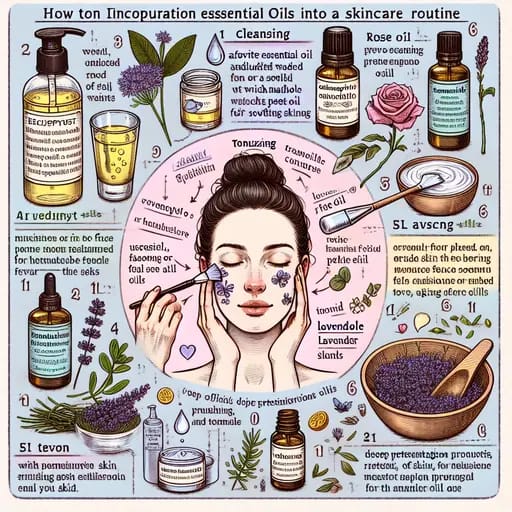
Ways to Incorporate Essential Oils into Your Skincare Routine
The diverse properties of essential oils make them an important part of a skincare routine. They can help balance, hydrate, and rejuvenate the skin, each behaving differently to address specific challenges or needs. Below are several ways to add them to your regimen:
Cleansing
One of the first steps to any skincare routine is cleansing. You can enhance the benefits of this step by adding a few drops of your favorite essential oil to your regular facial cleanser. Eucalyptus, tea tree, and lavender essential oils are good choices as they have antiseptic properties, providing a deep clean to prevent breakouts.
Toning
Toning is crucial for balancing your skin’s pH. Essential oils can take this step to the next level. You can mix rose or chamomile essential oil with witch hazel, which can soothe and tighten the skin, reducing pore size.
Essential oils can provide extra hydration and anti-aging benefits when added to your daily moisturizer. Look for oils like rosehip, sandalwood, or jojoba which are known for their hydrating and cell regenerating properties.
Face Masks
A DIY face mask with essential oils can target specific skin needs. Lavender and chamomile oils are great for a soothing and anti-inflammatory mask, while lemon and tea tree oils can offer an acne-fighting treatment.
Facial Serums
A facial serum, which can penetrate deep into the skin layers, can benefit nicely from the power of essential oils. With anti-aging properties, Frankincense or carrot seed oils make a great addition.
The bottom line is to remember to dilute these essential oils properly before applying to your skin. This not only ensures safety but also adds to the efficacy of these natural wonders.
The next time you prepare to face the day or unwind in the evening, reach for essential oils and let their soothing scents and potent properties help you look your best and feel even better.
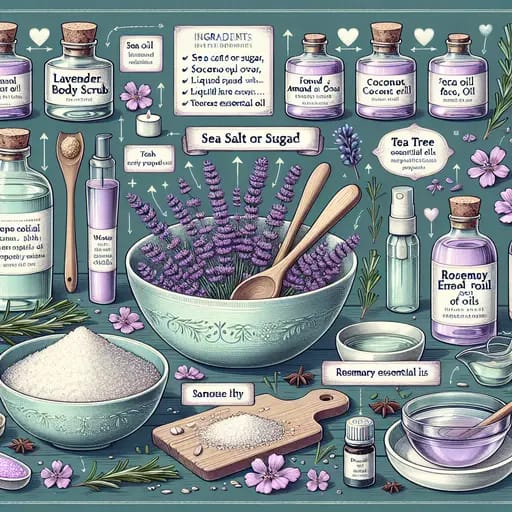
DIY Recipes for Beauty Products Using Essential Oils
Get ready to revolutionize your beauty regime with this deep dive into DIY beauty products using the potent gift from mother nature – essential oils. These concentrated liquid plant extracts are not just for the olfactory pleasure, their benefits cascade from the realm of aromatherapy to a profound skincare routine that can help tackle various skin issues.
Here’s an expert-curated list of easy-to-make homemade beauty products. Remember, quality matters, so always opt for 100% pure essential oils, free from additives, for the best results.
1. Luxurious Lavender Body Scrub
Ingredients:
Combine all ingredients and store in an airtight container. Use this calming lavender-rich scrub to invigorate your skin, slough off dead cells, and deliver unique therapeutic benefits.
2. Tea Tree Face Wash
Ingredients:
Mix all ingredients in a foaming dispenser. A whiff of this purifying face wash can address issues like acne, inflammation, and oily skin. Tea tree essential oil is hailed as a natural antiseptic and can reveal a healthy, radiant complexion.
3. Rosemary Hair Rinse
Ingredients:
Boil the dried rosemary in water. Let it cool, strain, then add the essential oil. Use this aromatic hair rinse post shampooing to stimulate hair growth and fight scalp concerns, highlighting the effectiveness of rosemary essential oil.
These are just starting points – as you explore, you’ll discover countless ways to incorporate essential oils into your beauty routine, make sure to do so safely (use the proper dilution and do a patch test first).
Armed with these all-natural, power-packed beauty treatments, you’re now ready to bid adieu to chemically loaded skincare products clogging up your cabinets. Crafting your beauty routine using DIY essential oil recipes promotes healthy skin, invigorates your senses, and paves the way to sustainable living.
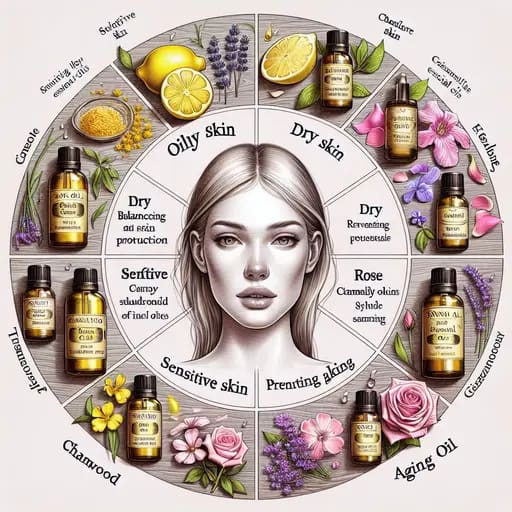
Essential Oil Blends for Different Skin Types and Concerns
Using personalized essential oil blends specifically formulated for your skin type can considerably enhance the results of your beauty regimen. In this section, we will explore various blends suitable for different skin types and concerns.
1. Oily Skin
If you’re dealing with a greasy skin surface constantly, certain essential oils can aid in balancing your skin’s oil production. It’s worth giving a try to:
2. Dry Skin
Dry skin can benefit remarkably from essential oils that hold intensive hydrating properties. Such include:
3. Sensitive Skin
Sensitive skin needs gentle and soothing essential oils that can nurture the skin without causing irritation. Consider using:
4. Aging Skin
If your main concern is aging skin with fine lines, wrinkles, and age spots, nature has you covered with several essential oils:
As a general rule, remember to always dilute essential oils before application, as they are highly concentrated. Also, conduct a patch test to ensure skin compatibility. In our next section, we will show you how to properly mix these oils into your skincare routine and bring you some DIY recipes.
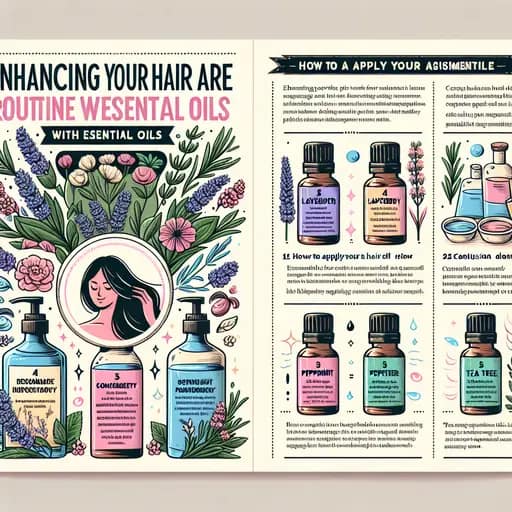
Enhancing your Hair Care Routine with Essential Oils
Utilizing essential oils in your hair care routine can prove to be transformative for your locks. They not only provide your hair with nourishment but also endorse growth, combat damage, and often address specific hair and scalp concerns. Let’s take a look at how you can enrich your hair care routine with the use of essential oils.
Choosing the Right Essential Oil
Deciding on an essential oil that suits your hair type is critical. Here are a few popular oils and the benefits they offer:
How to Apply Essential Oils to Your Hair
Now that you’ve chosen an essential oil that suits your needs, let’s discuss how to use it. Here is a simple step-by-step guide:
In conclusion, essential oils can indeed be a fantastic addition to your hair care routine. Not only do they support the health and growth of your hair, but their aromatic properties also make the hair care experience more relaxing and enjoyable.
In the following section, we will delve into how essential oils can be leveraged for aromatherapy during your beauty regimen. Stay tuned!
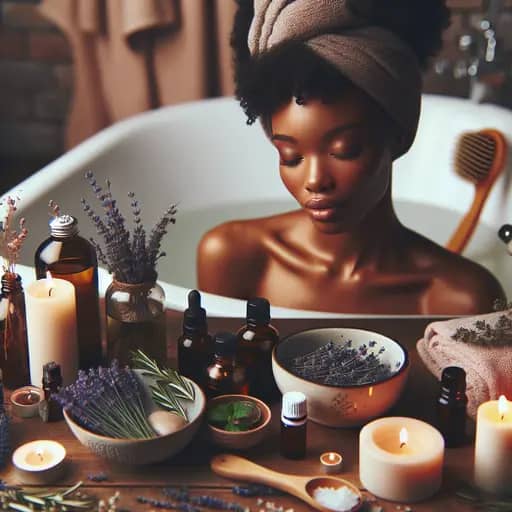
Using Essential Oils for Aromatherapy During Your Beauty Regimen
The essential oils are also very beneficial when it comes to aromatherapy as part of your beauty regimen. Aromatherapy is a natural method promoting both physical and emotional health. Accompanied by the blissful scents from essential oils, your beauty routine can turn into an enriching spa-like experience. Here is how you can introduce aromatherapy with essential oils into your beauty regimen.
Choosing Oils Based on Their Aromatic Properties
Just as each essential oil boasts unique therapeutic properties, their aromas also have distinct impacts on our mood and emotions. Below are some key essential oils along with their aromatic benefits:
Ways to Integrate Aromatherapy into Your Routine
Following are some easy ways to incorporate aromatherapy into your beauty regimen:
In conclusion, adding aromatherapy with essential oils to your beauty routine can elevate your experience to a therapeutic level while boosting your mood. However, remember to dilute the essential oils and perform a patch test to avoid any skin irritation.
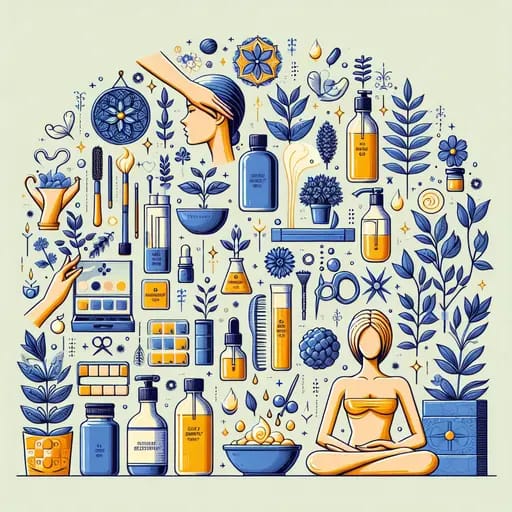
Conclusion: Embracing the natural beauty benefits of essential oils
In this article, we’ve uncovered a treasure trove of information about harnessing the beauty benefits of essential oils. Essential oils can be a game-changer for your beauty routine, offering natural ways to enhance your skin, hair, and overall wellness.
But let’s do a quick recap:
If you were skeptical at first, we hope this comprehensive guide provided the encouragement needed for you to incorporate essential oils into your beauty routine. They’re a natural way to take care of your skin and hair while also providing a pleasurable sensory experience.
Become an advocate for your own natural beauty and wellness revolution – start experimenting with essential oils today!
Never forget, beauty is not about conforming to standards, but finding what works best for you and your individual needs. Essential oils offer an array of options to explore, allowing you to curate a bespoke beauty routine that best caters to your needs and preferences. Embrace the natural beauty benefits of essential oils, and you’ll be amazed at the transformation in your skincare routine, appearance, and well-being.

